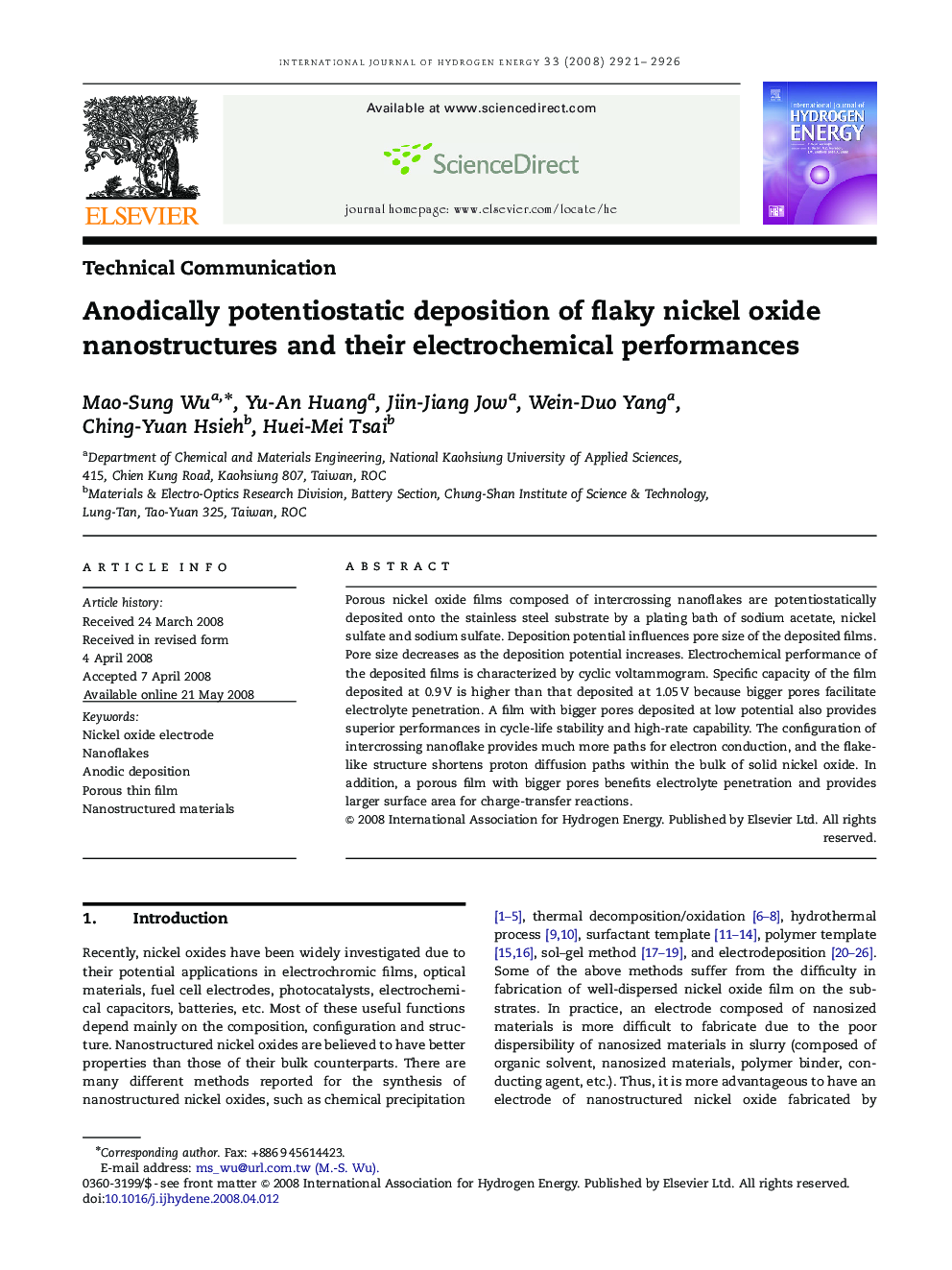| Article ID | Journal | Published Year | Pages | File Type |
|---|---|---|---|---|
| 1279576 | International Journal of Hydrogen Energy | 2008 | 6 Pages |
Porous nickel oxide films composed of intercrossing nanoflakes are potentiostatically deposited onto the stainless steel substrate by a plating bath of sodium acetate, nickel sulfate and sodium sulfate. Deposition potential influences pore size of the deposited films. Pore size decreases as the deposition potential increases. Electrochemical performance of the deposited films is characterized by cyclic voltammogram. Specific capacity of the film deposited at 0.9 V is higher than that deposited at 1.05 V because bigger pores facilitate electrolyte penetration. A film with bigger pores deposited at low potential also provides superior performances in cycle-life stability and high-rate capability. The configuration of intercrossing nanoflake provides much more paths for electron conduction, and the flake-like structure shortens proton diffusion paths within the bulk of solid nickel oxide. In addition, a porous film with bigger pores benefits electrolyte penetration and provides larger surface area for charge-transfer reactions.
